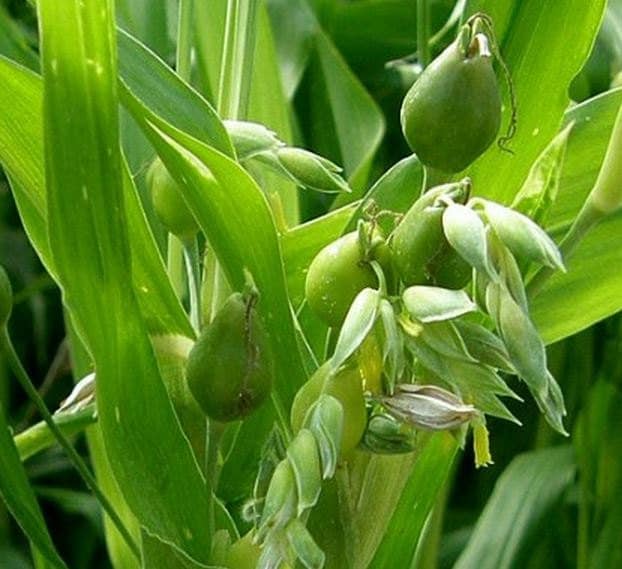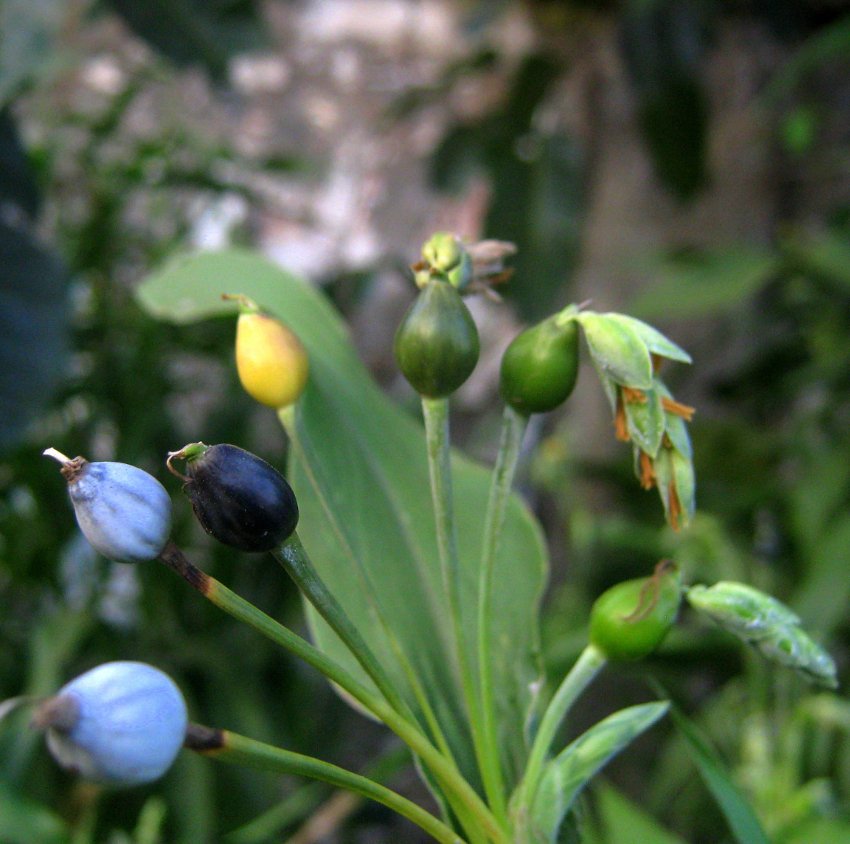Your Jobs tears plant images are available. Jobs tears plant are a topic that is being searched for and liked by netizens today. You can Download the Jobs tears plant files here. Find and Download all free images.
If you’re searching for jobs tears plant images information linked to the jobs tears plant keyword, you have come to the right blog. Our website always gives you suggestions for downloading the highest quality video and picture content, please kindly hunt and find more enlightening video articles and graphics that fit your interests.
Jobs Tears Plant. It is native to china, india, pakistan, sri lanka, and malaysia. The results showed that job’s tears was one of the plants most used for the treatment of lower back pain (sreekeesoon and mahomoodally, 2014). (for beading or growing!) job tears are the seeds of a grain plant, much like a small, skinny corn, or a really robust rye. 36 to 54 inches (90 to 140 cm).
 Shop Live Jobs Tears Plant For Sale From sowexotic.com
Shop Live Jobs Tears Plant For Sale From sowexotic.com
Job�s tears, vyjanti beads, coixseed, adlai, beed seeds. It may be grown as an annual in other areas. Yotrak/istock/getty images job�s tears, also known as adlay and coix, is a member of the grass family and popular in asian cultures as a food source and for making jewelry. Other names for this crop include coixseed, tear grass, and adlay. In a terrarium, the plants can creep to the edges of the glass, hiding the bare soil. The grain is also known as adlay, adlay millet, and coix.
It is native to china, india, pakistan, sri lanka, and malaysia.
It�s believed the original rosary beads were actually job�s tears seeds. The seed saver’s exchange description of job tears: Job’s tears may be a strange name for a plant, but in folk medicine it was used to treat dozens of conditions from arthritis to smallpox. When to plant job�s tears? It is believed to originate in india, but is most popular as food and medicine in china and japan. So job’s tears can be used as feed for cattle and poultry in the same way as corn, and it seems that elephants also love to snack on the long stems full of grains.
 Source: etsy.com
Source: etsy.com
The root and seed of. These hard little bead seeds are actually not just seeds, they are technically a flower as well. It may be grown as an annual in other areas. Yotrak/istock/getty images job�s tears, also known as adlay and coix, is a member of the grass family and popular in asian cultures as a food source and for making jewelry. Buy job’s tears seeds here.
 Source: sowexotic.com
Source: sowexotic.com
In a small hanging basket, the spreading plants can spill attractively over the sides. 36 to 54 inches (90 to 140 cm). Job�s tears is an annual grass crop that grows in china, japan, korea, taiwan, and other asian countries, where it is considered a health food. It grows 1 to 3 metres (3.3 to nearly 10 feet) tall and features jointed stems with long flat leaf blades. Hepatocellular carcinoma (hcc) is the fifth most prevalent malignant tumor in men worldwide and the second most frequent cause of cancer related mortality.
 Source: pinterest.com
Source: pinterest.com
Baby�s tears plants adapt well to life in containers. Not only are the seeds fascinating to watch as they emerge, they are really fun to use in. The results showed that job’s tears was one of the plants most used for the treatment of lower back pain (sreekeesoon and mahomoodally, 2014). Common uses a plant that has been domesticated by humans for a long time has, of course, many uses. It does require moist soil so irrigation in necessary in dry areas.
 Source: etsy.com
Source: etsy.com
Yotrak/istock/getty images job�s tears, also known as adlay and coix, is a member of the grass family and popular in asian cultures as a food source and for making jewelry. The outer casings of the grain are also used to improve agricultural soil. It does require moist soil so irrigation in necessary in dry areas. Common uses a plant that has been domesticated by humans for a long time has, of course, many uses. Bring to a boil again.
 Source: lewisginter.org
Source: lewisginter.org
Yotrak/istock/getty images job�s tears, also known as adlay and coix, is a member of the grass family and popular in asian cultures as a food source and for making jewelry. It may be grown as an annual in other areas. It is believed to originate in india, but is most popular as food and medicine in china and japan. The plant does not appear to have any religious significance, despite the biblical references in its common names, although the grains are sometimes used. It is native to china, india, pakistan, sri lanka, and malaysia.
 Source: plants.usda.gov
Source: plants.usda.gov
It grows 1 to 3 metres (3.3 to nearly 10 feet) tall and features jointed stems with long flat leaf blades. It�s believed the original rosary beads were actually job�s tears seeds. Believed to originate in india, it is most popular these days in china and japan (where it is known as hato mugi). Yotrak/istock/getty images job�s tears, also known as adlay and coix, is a member of the grass family and popular in asian cultures as a food source and for making jewelry. Originally native to southeast asia and polynesia, the plant grows wild today in parts of europe and central america.
 Source: pinterest.com
Source: pinterest.com
Food was it�s first and most important use. It is believed to originate in india, but is most popular as food and medicine in china and japan. It is considered a nutritious health food in asian countries. It�s believed the original rosary beads were actually job�s tears seeds. Katigbi / coix lachryma linn./ job�s tears:
 Source: biolib.cz
Source: biolib.cz
In china it is used together with other herbs in traditional chinese medicine. As a perennial in zones 9 and 10. The outer casings of the grain are also used to improve agricultural soil. The common name for job�s tears comes from their distinctive teardrop shape, although the tears are sometimes ascribed to different people, such as mary�s tears, christ�s tears, and so forth. Food was it�s first and most important use.
 Source: pinterest.com
Source: pinterest.com
Wash job’s tears till water is clear. In a small hanging basket, the spreading plants can spill attractively over the sides. Boil water in the pot. Job’s tears is an attractive plant that can reach 4 to 6 feet tall and will perennialize in areas where there is no frost (it is considered hardy at zone 9). As a matter of fact, in some parts of the world, it is also called “mother of corn”.
 Source: etsy.com
Source: etsy.com
Other names for this crop include coixseed, tear grass, and adlay. In a mixed outdoor planting, baby tears plants work great as an edging plant. Job�s tears is an annual grass crop that grows in china, japan, korea, taiwan, and other asian countries, where it is considered a health food. In a small hanging basket, the spreading plants can spill attractively over the sides. The seeds are sometimes used as ornamental beads.
 Source: centerofthewebb.ecrater.com
Source: centerofthewebb.ecrater.com
Food was it�s first and most important use. In a small hanging basket, the spreading plants can spill attractively over the sides. Plants are extremely adaptable and will grow in most climates. In china it is used together with other herbs in traditional chinese medicine. The results showed that job’s tears was one of the plants most used for the treatment of lower back pain (sreekeesoon and mahomoodally, 2014).
 Source: garysspecialtyplants.blogspot.com
Source: garysspecialtyplants.blogspot.com
Hepatocellular carcinoma (hcc) is the fifth most prevalent malignant tumor in men worldwide and the second most frequent cause of cancer related mortality. In a small hanging basket, the spreading plants can spill attractively over the sides. The results showed that job’s tears was one of the plants most used for the treatment of lower back pain (sreekeesoon and mahomoodally, 2014). Like most cereal grains, job�s tears is nutritious, containing essential amino acids,. (for beading or growing!) job tears are the seeds of a grain plant, much like a small, skinny corn, or a really robust rye.
 Source: gardeningknowhow.com
Source: gardeningknowhow.com
Believed to originate in india, it is most popular these days in china and japan (where it is known as hato mugi). In addition to its fairly easy cultivation, the job’s tears plant also contains a higher nutrient content than rice. It grows 1 to 3 metres (3.3 to nearly 10 feet) tall and features jointed stems with long flat leaf blades. Herbal therapy / alternative medicine in the philippines It�s believed the original rosary beads were actually job�s tears seeds.
 Source: omcseeds.com
Source: omcseeds.com
Job�s tears (called hato mugi, in japanese) is an uncommon grain eaten traditionally from africa to japan. Common uses a plant that has been domesticated by humans for a long time has, of course, many uses. Job’s tears may be a strange name for a plant, but in folk medicine it was used to treat dozens of conditions from arthritis to smallpox. Job�s tears (called hato mugi, in japanese) is an uncommon grain eaten traditionally from africa to japan. Job’s tears smut, which infects both the ovary of flowers and leaves, is very widespread and has been reported to cause severe damage to the crops in thailand, india and china (titatarn et al., 1983;
 Source: sheffields.com
Source: sheffields.com
The plant resembles corn, but is smaller, often branched, and perennial in mild climates. Job’s tears may be a strange name for a plant, but in folk medicine it was used to treat dozens of conditions from arthritis to smallpox. Job’s tears smut, which infects both the ovary of flowers and leaves, is very widespread and has been reported to cause severe damage to the crops in thailand, india and china (titatarn et al., 1983; Job�s tears, vyjanti beads, coixseed, adlai, beed seeds. The plant does not appear to have any religious significance, despite the biblical references in its common names, although the grains are sometimes used.
 Source: pinterest.com
Source: pinterest.com
Highly productive grass species with wide ranges of uses, both edible and ornamental. In a mixed outdoor planting, baby tears plants work great as an edging plant. The seed saver’s exchange description of job tears: It�s believed the original rosary beads were actually job�s tears seeds. The plant does not appear to have any religious significance, despite the biblical references in its common names, although the grains are sometimes used.
 Source: southseedbank.com
Source: southseedbank.com
The root and seed of. In a terrarium, the plants can creep to the edges of the glass, hiding the bare soil. In addition to its fairly easy cultivation, the job’s tears plant also contains a higher nutrient content than rice. Job�s tears is a tropical grass native to southeast asia, and has been naturalized in southern america as well as the caribbean. In a mixed outdoor planting, baby tears plants work great as an edging plant.
 Source: sowtrueseed.com
Source: sowtrueseed.com
Wash job’s tears till water is clear. It is considered a nutritious health food in asian countries. Job�s tears is an annual grass crop that grows in china, japan, korea, taiwan, and other asian countries, where it is considered a health food. Wash job’s tears till water is clear. Job’s tears is an attractive plant that can reach 4 to 6 feet tall and will perennialize in areas where there is no frost (it is considered hardy at zone 9).
This site is an open community for users to do sharing their favorite wallpapers on the internet, all images or pictures in this website are for personal wallpaper use only, it is stricly prohibited to use this wallpaper for commercial purposes, if you are the author and find this image is shared without your permission, please kindly raise a DMCA report to Us.
If you find this site good, please support us by sharing this posts to your preference social media accounts like Facebook, Instagram and so on or you can also save this blog page with the title jobs tears plant by using Ctrl + D for devices a laptop with a Windows operating system or Command + D for laptops with an Apple operating system. If you use a smartphone, you can also use the drawer menu of the browser you are using. Whether it’s a Windows, Mac, iOS or Android operating system, you will still be able to bookmark this website.







